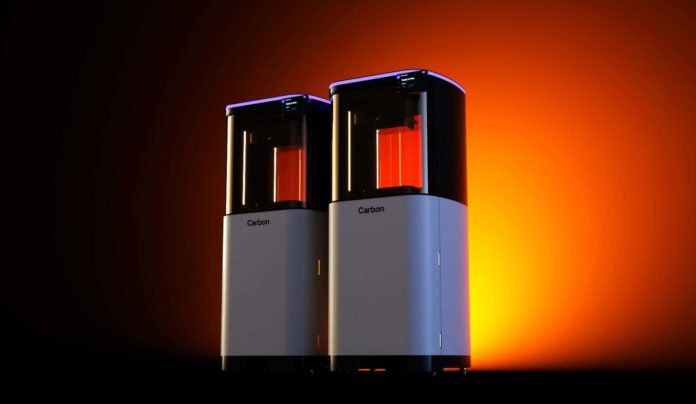Carbon, the US-based company behind the Digital Light Synthesis (DLS) 3D printing technology, has developed new and improved M3 series 3D printers. The latest 3D printers the unicorn unveiled on the market were the M2 in 2017 and the L1 in 2019 – production platforms used to fabricate products across industries.
The new machines M3 and M3 Max are advanced end-to-end production platforms when combined with Carbon’s Design Engine software platform and range of DLS materials.
“With these next generation printers — combined with our Design Engine software and Carbon DLS materials — design teams across business verticals can create high-quality prototypes with end-use performance quicker and more efficiently than ever before,” said Phil DeSimone, Chief Product and Business Development Officer at Carbon. “And once the product development is complete, Carbon’s platform enables companies to move to production quickly and efficiently anywhere in the world. We believe this new generation of Carbon DLS technology will empower more collaboration and help to revolutionise how products are designed and made.”
Improvements in the M3 – which is already available for commercialization – include the printing process which is faster and the more consistent surface finish process. Apart from these advantages, the M3 Max 3D printer is equipped with a true 4K light engine, allowing double the build area with the same pixel size and density. With a build volume twice the size of the M3 – but delivering the same pixel size and density, the M3 Max facilitates the printing of larger applications. Both machines can meet the production requirements of applications in the automotive, life sciences, dental, consumer products and industrial sectors.
The company explains that these new machines will demonstrate its efforts to ensure ‘substantially lower’ forces on the part during the build process. It will also provide closed-loop control of force and temperature to reduce failure modes. Operators will explore new geometries, especially for elastomeric parts.
With better heat management, the new 3D printers enable to maintain faster print speeds without any detrimental effects on parts. According to the manufacturer, users can expect up to a 250% increase in throughput when compared to the M2.
Other features include:
| M3 | M3 Max | |
| Build volume | 189 x 119 x 326mm | 307 x 163 x 326mm |
| XYZ resolution | 75 microns | 75 microns |
| General accuracy | Up to 65 microns | Up to 65 microns |
| Production repeatability | Up to 37 microns | Up to 37 microns |
“Fast Radius uses Carbon’s printers and materials to produce parts for a wide range of customers, across varying applications,” added Bobby Bott, VP of Manufacturing at Fast Radius, a Carbon Partner. “We’ve also leveraged the Carbon Design Engine—in conjunction with our own software capabilities—to help customers evaluate materials and technologies to produce parts that exceed quality standards and timelines. Having worked with Carbon for five years, we are thrilled to continue our partnership and bring the M3 capabilities to our customers.”
Remember, you can post job opportunities in the AM Industry on 3D ADEPT Media free of charge or look for a job via our job board. Make sure to follow us on our social networks and subscribe to our weekly newsletter: Facebook, Twitter, LinkedIn & Instagram ! If you want to be featured in the next issue of our digital magazine or if you hear a story that needs to be heard, make sure you send it to contact@3dadept.com






